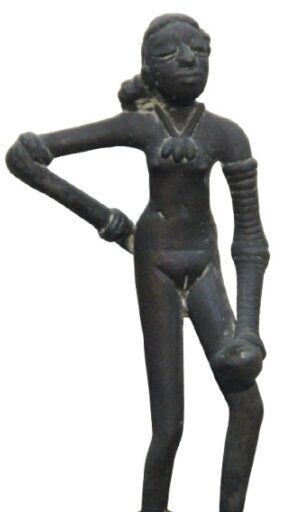HAPPY TRAVELLING
Rituals of Uttar Pradesh
Uttar Pradesh, India’s most populous state, is a land of deep-rooted cultural and religious heritage. The rituals of Uttar Pradesh are diverse, marking life events, spiritual beliefs, and social customs. These traditions hold immense spiritual, social, and scientific significance, reflecting the state’s rich history and devotion.
Life Event Rituals

Annaprashan (First Rice Ceremony)
A sacred Hindu ritual marking the infant’s first intake of solid food, symbolizing their transition to the next stage of growth. It is performed in the presence of family and well-wishers, seeking blessings for the child’s health and prosperity.
How is it done?
- Ganapati Pooja – Worship of Lord Ganesha for removing obstacles.
- Mantra Recitation – Sacred chants for the child’s well-being.
- Feeding Ritual – The first morsel of rice is fed to the baby by parents or elders.
- Blessing Ceremony – Elders shower their blessings for the child’s prosperous future.

Mundan (Head-Shaving Ceremony)
An ancient tradition where a child’s first hair is shaved off, believed to purify them from past life karmas and promote healthy hair growth.
How is it done?
- Sacred Fire Ritual (Havan) – Conducted to seek divine blessings.
- Shaving of Hair – A priest or barber shaves the child’s hair while chanting mantras.
- Holy Bath – The child is bathed in sacred water for purification.
- Blessings & Offerings – Elders bless the child, and offerings are made to deities.

Antyeshti (Hindu Funeral Rites)
A final journey ritual in Hindu tradition, where cremation is performed to release the soul from the mortal body and guide it toward liberation (moksha). Special significance is given to performing these rites along the banks of the Ganges.
How is it done?
- Preparation of the Body – The deceased is bathed, dressed, and adorned with sacred items.
- Pind Daan (Food Offerings) – Rice balls are offered to ancestors for their peace.
- Cremation (Agni Sanskar) – The body is placed on a pyre and set aflame while mantras are recited.
- Ashes Immersion (Asthi Visarjan) – The ashes are immersed in sacred rivers, often the Ganges, to aid the soul’s journey toward liberation.
Spirit Worship Rituals

Pitra Paksha Shradh (Ancestor Worship Ceremony)
A sacred Hindu ritual performed during the lunar fortnight of Pitra Paksha to honor and appease departed ancestors. It is believed that offering food and prayers during this period helps in attaining peace and blessings from the forefathers. Prayagraj and Varanasi are particularly revered for conducting these ceremonies.
How is it done?
- Tarpan (Water Offering) – Holy water, black sesame seeds, and rice are offered to ancestors.
- Pind Daan (Food Offerings) – Rice balls mixed with ghee and honey are offered to the departed souls.
- Feeding Brahmins & Cows – Providing food to Brahmins and feeding animals is believed to grant moksha to ancestors.
- Mantra Recitation – Vedic hymns and prayers are chanted for peace and liberation of the souls.
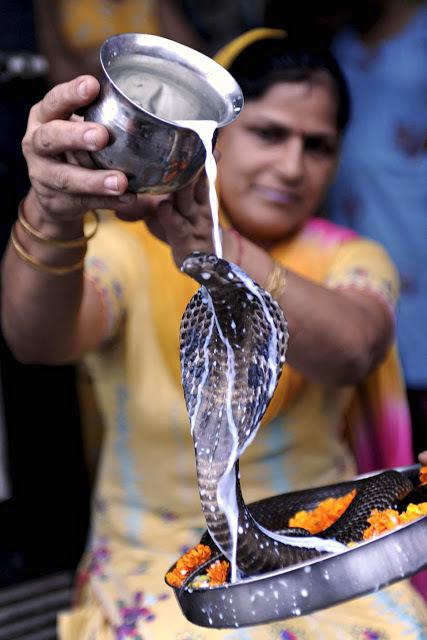
Nag Panchami (Serpent Worship Ritual)
A festival dedicated to the reverence of snakes, symbolizing protection, fertility, and prosperity. Snakes are considered divine beings, and their worship is believed to safeguard families from misfortunes and evil influences.
How is it done?
- Milk Offering – Devotees offer milk and sweets to snake idols or live serpents.
- Nag Devta Pooja – Worship of the serpent deity with flowers, turmeric, and sacred mantras.
- Drawing Snake Symbols – Traditional snake symbols are drawn at doorsteps for protection.
- Fasting and Prayers – Observing fasts and reciting Nag Panchami Katha for family well-being.

Bhut Pret Pooja (Exorcism & Spirit Appeasement Rituals)
A spiritual ceremony performed in rural areas to ward off negative energies, evil spirits, and supernatural disturbances. These rituals are believed to bring peace, remove obstacles, and protect individuals from unseen forces.
How is it done?
- Havan (Sacred Fire Ritual) – A fire ceremony with specific herbs to purify the surroundings.
- Mantra Chanting – Recitation of protective mantras and prayers to dispel negative entities.
- Offering to Spirits – Food, incense, and other offerings are made to restless spirits to pacify them.
- Lime and Mustard Seed Rituals – Used in rural traditions to absorb and repel negative energies.
Festival Rituals

Holi (Festival of Colors)
Holi, the festival of colors, is a vibrant celebration of spring, joy, and unity. It marks the victory of good over evil, particularly the legend of Prahlad and Holika. The festival fosters love and togetherness as people smear colors on each other and enjoy festive treats.
How is it done?
- Holika Dahan (Bonfire Ritual) – The night before Holi, a bonfire is lit symbolizing the burning of evil.
- Color Smearing (Rangwali Holi) – People joyfully apply colors to friends and family.
- Sweets & Festive Drinks – Special treats like gujiya and thandai are prepared and shared.
- Dancing & Singing – Holi gatherings feature music, traditional folk songs, and dance.
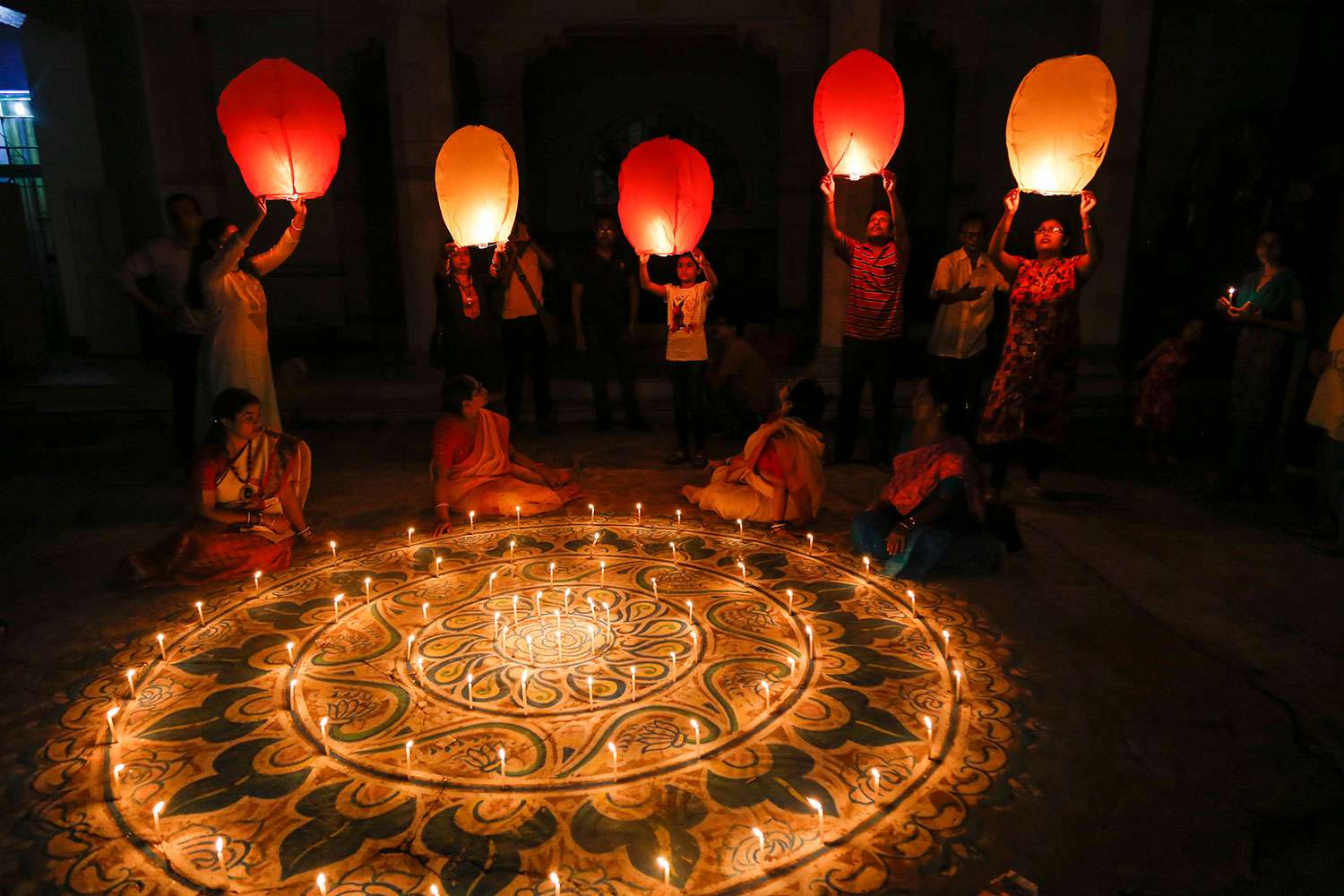
Diwali (Festival of Lights)
Diwali, the festival of lights, symbolizes the victory of light over darkness and good over evil. It marks Lord Rama’s return to Ayodhya after defeating Ravana and is celebrated with grandeur across India.
How is it done?
- Lakshmi Pooja – Worship of Goddess Lakshmi for prosperity and well-being.
- Lighting Diyas & Fireworks – Homes are illuminated with lamps and fireworks brighten the sky.
- Rangoli & Decorations – Colorful patterns and flowers adorn homes.
- Exchanging Sweets & Gifts – Families and friends share sweets and gifts as a token of love.

Dussehra (Vijayadashami – Victory of Good over Evil)
Dussehra marks the victory of Lord Rama over Ravana, symbolizing the triumph of righteousness. The festival concludes the nine-day Navratri celebrations and is observed with grand spectacles.
How is it done?
- Ramleela Performances – Enactment of Lord Rama’s life story in open-air theaters.
- Burning of Ravana Effigies – Huge effigies of Ravana, Meghnad, and Kumbhkaran are set on fire.
- Temple Prayers & Fasting – Devotees observe fasts and visit temples for blessings.
- Ayudha Pooja (Worship of Weapons) – Traditional practice among warriors and artisans.

Janmashtami (Lord Krishna’s Birth Celebration)
Janmashtami celebrates the birth of Lord Krishna, the divine protector and guide. Devotees engage in night-long prayers, fasting, and joyful festivities to honor his arrival.
How is it done?
- Fasting & Bhajans – Devotees fast until midnight, the time of Krishna’s birth.
- Temple Decorations & Abhishek – Idols of Krishna are bathed with milk, curd, and honey.
- Dahi Handi (Pot Breaking Ritual) – Groups form human pyramids to break a high-hung pot of curd, reenacting Krishna’s childhood mischief.
- Chanting & Celebrations – Devotional songs and dances fill temples and homes.

Chhath Puja (Worship of the Sun God)
Chhath Puja is a sacred festival in eastern Uttar Pradesh and Bihar, dedicated to the Sun God. Devotees seek blessings for health, prosperity, and well-being by offering prayers at riverbanks.
How is it done?
- Nahay Khay (First-Day Ritual) – Devotees purify themselves with a holy bath.
- Kharna (Fasting Ritual) – A special offering of jaggery and rice is prepared.
- Sandhya Arghya (Evening Offering) – Devotees offer water and fruits to the setting sun.
- Usha Arghya (Morning Offering) – Worship continues at sunrise, with offerings to the rising sun.

Kumbh Mela (World’s Largest Religious Gathering)
Held every 12 years in Prayagraj, Haridwar, Ujjain, and Nashik, the Kumbh Mela is the grandest spiritual gathering in the world. Devotees believe that bathing in the sacred river during this time cleanses sins and grants liberation.
How is it done?
- Ritual Bathing (Shahi Snan) – Devotees take a dip at the Triveni Sangam for spiritual purification.
- Sadhus & Akharas Processions – Ascetic monks and spiritual leaders perform grand processions.
- Religious Discourses – Saints and scholars conduct discussions on Hindu philosophy.
- Community Feasts & Charity – Free meals and donations are offered to the needy.
Temple Rituals

Mangala Aarti in Kashi Vishwanath Temple (Varanasi)
Mangala Aarti is the early morning worship performed at the revered Kashi Vishwanath Temple, one of the most sacred shrines dedicated to Lord Shiva. It is believed that attending this divine ritual grants spiritual blessings and purification of the soul.
How is it done?
- Temple Doors Open Before Dawn – The ceremony begins around 3:00 AM.
- Sacred Mantras & Bell Chants – Priests chant Vedic hymns as temple bells ring.
- Offerings to Lord Shiva – Milk, honey, ghee, and water are poured on the Shiva Lingam.
- Lighting of Lamps – Devotees participate in the aarti, offering lighted lamps to Lord Vishwanath.

Yamuna Aarti in Mathura-Vrindavan
The Yamuna Aarti is a devotional offering to the Yamuna River, revered as the divine consort of Lord Krishna. The ritual takes place at Vishram Ghat in Mathura and Keshi Ghat in Vrindavan, where devotees express gratitude and seek blessings.
How is it done?
- Chanting & Bhajans – Devotional songs dedicated to Goddess Yamuna are sung.
- Flower & Lamp Offerings – Diyas (lamps) and fresh flowers are floated on the river.
- Recitation of Yamunashtak – Verses glorifying Yamuna Devi are recited.
- Final Aarti Procession – Priests perform synchronized lamp-waving while conch shells are blown.

Ayodhya Ram Janmabhoomi Aarti
This grand aarti is performed at the sacred Ram Janmabhoomi in Ayodhya, the birthplace of Lord Rama. The ritual is a celebration of devotion, marking Lord Rama’s divine presence and bestowing his blessings upon devotees.
How is it done?
- Shri Ram Stuti – The ceremony begins with praises sung for Lord Rama.
- Offering of Flowers & Incense – Devotees present lotus flowers and sandalwood.
- Grand Aarti with Diyas – Priests perform an elaborate aarti with multiple-tiered lamps.
- Chanting of ‘Jai Shri Ram’ – The ritual concludes with loud chants of “Jai Shri Ram” in unison.

Ganga Aarti in Varanasi (Dashashwamedh Ghat)
The Ganga Aarti in Varanasi is a mesmerizing evening ritual, where lamps are offered to the sacred River Ganga. The ritual signifies gratitude and reverence for the life-sustaining river, attracting thousands of devotees and visitors.
How is it done?
- Priests in Traditional Attire – Young priests dressed in saffron perform synchronized movements.
- Incense, Conch Shells & Lamps – The air is filled with holy smoke, conch sounds, and devotional songs.
- Grand Lamp Offering (Deepdaan) – Massive brass lamps with multiple tiers are waved in intricate patterns.
- Floating Diyas on Ganga – Devotees offer small oil lamps, setting them afloat on the river’s surface.
Traditional Wedding Rituals

Rokka (Pre-Engagement Commitment Ceremony)
Rokka is the first step in an Indian wedding, signifying the formal approval of both families. It is considered an unofficial engagement, marking the beginning of the wedding journey.
How is it done?
- Tilak & Blessings – The groom receives a tilak (vermilion mark) from the bride’s family.
- Exchange of Gifts – Families exchange sweets, clothes, and jewelry as a token of goodwill.
- Sacred Prayers – A priest conducts rituals to bless the couple for a prosperous future.
- Commitment Ceremony – The couple is showered with blessings, sealing the match.
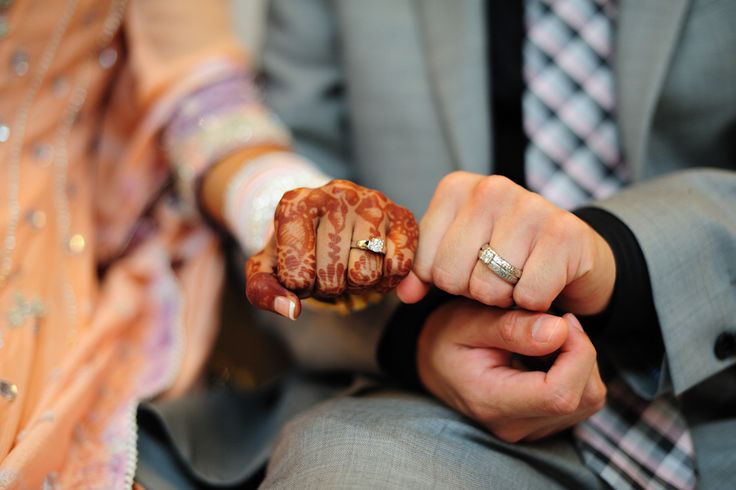
Mangni (Engagement Ceremony)
Mangni, also known as the ring ceremony, is the official engagement where the couple exchanges rings in the presence of their families and loved ones.
How is it done?
- Ring Exchange – The couple places rings on each other’s fingers, symbolizing commitment.
- Blessings from Elders – The families bless the couple for happiness and success.
- Traditional Gifts & Sweets – Families exchange gifts, and guests are treated to a feast.
- Music & Celebrations – Close relatives celebrate with music and dance.
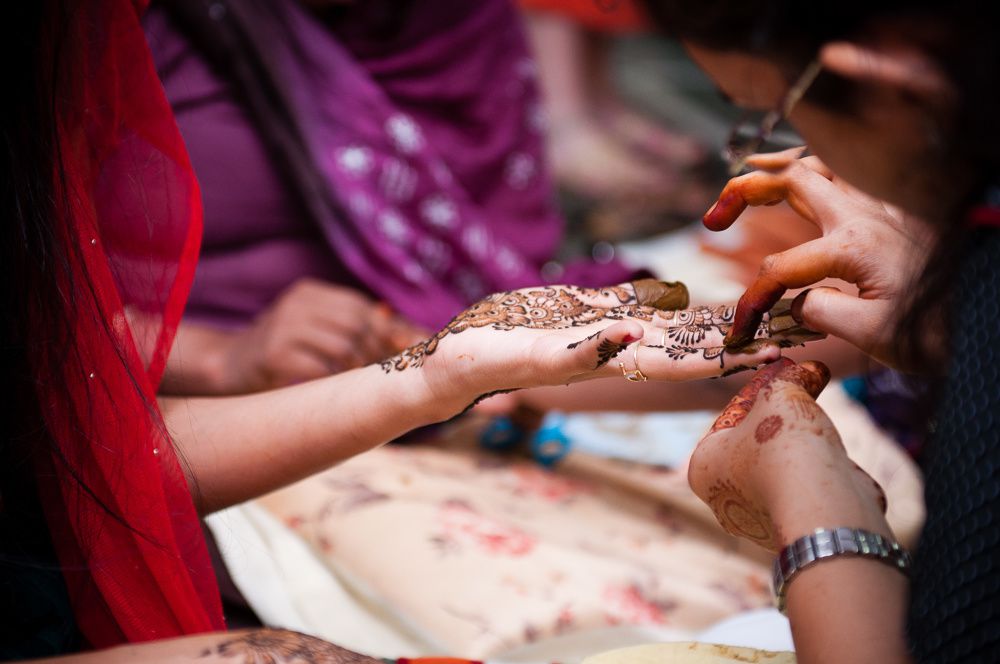
Mehndi (Henna Ceremony)
The Mehndi ceremony is a joyful celebration where the bride’s hands and feet are adorned with intricate henna designs, symbolizing love and prosperity.
How is it done?
- Application of Henna – Professional artists apply henna to the bride and female family members.
- Traditional Songs & Dance – Women sing folk songs and dance to celebrate the occasion.
- Groom’s Initial Hidden in Mehndi – The bride’s mehndi includes the groom’s initials, which he must later find.
- Waiting for Color to Develop – The deeper the henna stain, the stronger the love and bond are believed to be.

Sangeet (Musical Celebration Night)
The Sangeet is a lively pre-wedding event filled with dance, music, and celebrations, bringing both families together in joyous union.
How is it done?
- Family Performances – Relatives prepare dance performances dedicated to the couple.
- Dhol & DJ Music – Traditional dhol beats and modern music keep the energy high.
- Fun Games & Entertainment – Couples participate in friendly competitions and games.
- Food & Festivities – Guests enjoy a grand feast and celebrate late into the night.

Chuda Ceremony (Bangle Ritual for the Bride)
A traditional Punjabi wedding ritual where the bride is gifted red and ivory bangles (chuda), signifying her new journey.
How is it done?
- Maternal Uncle’s Gift – The bride’s maternal uncle gifts her chuda bangles.
- Kaleere Tying – Gold or silver kaleere (hanging ornaments) are tied to the bangles.
- Blessings from Family – Elders bless the bride for happiness and prosperity.
- Traditional Fasting – The bride may observe a fast before wearing the chuda.

Saptapadi (Seven Sacred Steps & Vows)
Saptapadi is the most significant wedding ritual where the couple takes seven rounds around the sacred fire (Havan Kund) while making seven promises to each other.
How is it done?
- Priest Recites Vows – The priest chants Vedic mantras as the couple walks around the fire.
- Seven Steps Taken Together – Each step symbolizes a vow for a harmonious marriage.
- Tying the Sacred Knot – The groom’s scarf is tied to the bride’s saree, symbolizing unity.
- Completion of Marriage – After the seventh step, the couple is officially married.

Sindoor Daan (Applying Vermilion to the Bride)
Sindoor Daan is the sacred moment when the groom applies sindoor (vermilion) to the bride’s hair parting, marking her as a married woman.
How is it done?
- Sindoor Application – The groom gently applies sindoor to the bride’s forehead.
- Mangalsutra Ceremony – The groom ties the mangalsutra (sacred necklace) around the bride’s neck.
- Family Blessings – Elders bless the couple for a prosperous married life.
- Traditional Fasting – The bride may observe a fast before this ritual for marital bliss.

Vidai (Farewell to the Bride)
Vidai is an emotional moment where the bride bids farewell to her parental home, stepping into a new life with her husband.
How is it done?
- Throwing Rice Backwards – The bride throws rice over her shoulder, blessing her family.
- Tears & Emotions – The bride and her family share an emotional goodbye.
- Groom Takes the Bride Home – The groom and his family escort the bride to her new home.
- Coins or Coconut Ritual – The bride may step over a coconut or coins, symbolizing prosperity.

Griha Pravesh (Welcoming the Bride to Her New Home)
Griha Pravesh is the first entry of the bride into her husband’s house, marking the beginning of her new life.
How is it done?
- Kumkum Water Ritual – The bride steps into a plate filled with kumkum water, leaving red footprints.
- Aarti & Blessings – The groom’s mother welcomes her with aarti and blessings.
- Breaking a Rice Pot – The bride kicks a pot of rice at the doorstep, symbolizing prosperity.
- Playing Fun Games – The couple plays games like finding a ring in milk, signifying love and understanding.

Significance of Ayurveda in Uttar Pradesh
Ayurveda, the ancient Indian system of medicine, has been practiced in Uttar Pradesh for centuries, with several traditional Ayurvedic centers, medicinal plant cultivation, and Vedic healing practices still thriving today.
- Kashi (Varanasi) as a Center of Ayurveda – Varanasi is home to one of the oldest Ayurvedic learning centers, where scholars have preserved traditional healing knowledge.
- Charaka and Sushruta’s Influence – Uttar Pradesh has a strong connection to Sushruta, the father of surgery, who developed advanced surgical techniques in ancient India.
- Ayurvedic Herbs & Medicinal Plants – The Gangetic plains are fertile grounds for medicinal herbs like Ashwagandha, Brahmi, and Tulsi, widely used in Ayurvedic treatments.

Traditional Ayurvedic Rituals & Practices
- Panchakarma Therapies – Ancient detoxification methods such as Abhyanga (oil massage), Virechana (purgation), and Nasya (nasal cleansing) are still practiced.
- Ayurvedic Diet & Rasayana (Rejuvenation Therapy) – People in Uttar Pradesh consume herbal diets enriched with ghee, Triphala, and Chyawanprash to boost immunity and longevity.
- Ayurvedic Wellness Centers – Cities like Lucknow, Varanasi, and Prayagraj house many Ayurvedic clinics and therapy centers, preserving traditional healing.
- Seasonal Ayurveda Practices – Based on Ritucharya (seasonal routines), people follow herbal remedies to balance doshas (Vata, Pitta, and Kapha).

Sacred Yoga Traditions in Uttar Pradesh
- Varanasi: The Spiritual Yoga Capital – Saints and yogis have meditated along the Ghats of the Ganges, practicing Hatha Yoga and Kundalini Yoga for spiritual awakening.
- Gorakhnath & Nath Sampradaya – The Gorakhnath Temple in Gorakhpur is a major center of Hatha Yoga, associated with Guru Gorakhnath, a legendary yogi.
- Mathura-Vrindavan & Bhakti Yoga – Mathura and Vrindavan are deeply linked to Bhakti Yoga (Yoga of Devotion), with saints practicing devotion to Lord Krishna.
- Ayodhya’s Contribution to Raja Yoga – Ayodhya, the birthplace of Lord Rama, has been associated with meditative practices (Dhyana and Samadhi) for centuries.

Popular Yoga Practices in Uttar Pradesh
- Ganga Ghats Yoga – Many devotees and practitioners perform early morning yoga along the banks of the Ganges for spiritual and physical well-being.
- International Yoga Day Celebrations – Cities like Lucknow and Varanasi hold massive yoga sessions on June 21st, promoting holistic health.
- Kumbh Mela & Yoga Demonstrations – During the Kumbh Mela, renowned yoga gurus conduct yoga sessions to enlighten devotees on the benefits of Yogic practices.
- Ashtanga & Hatha Yoga in Temples & Ashrams – Many ashrams and temples across Uttar Pradesh teach Hatha Yoga postures, Pranayama (breath control), and Dhyana (meditation) to visitors.
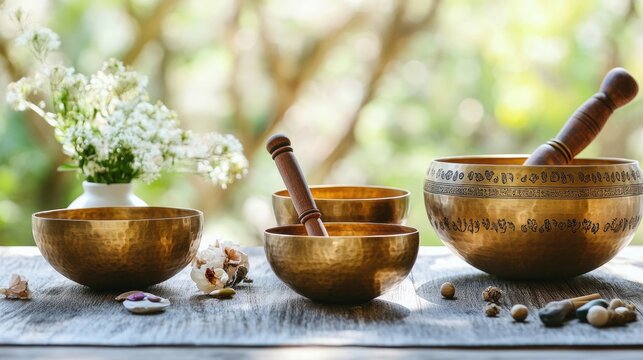
Ayurveda & Yoga in Modern Uttar Pradesh
- Ayush Wellness Centers – The government has promoted Ayurveda, Yoga, Unani, Siddha, and Homeopathy (AYUSH) in hospitals and wellness retreats across the state.
- Yoga & Ayurveda Universities – Institutions like Sanskrit Universities in Varanasi and Ayurvedic colleges in Lucknow preserve and teach these ancient traditions.
- Heritage Yoga Retreats & Tourism – Tourists visit Varanasi, Rishikesh (near UP border), and Gorakhpur for Ayurvedic detox therapies and yoga retreats.
- Integration with Daily Life – Many people in Uttar Pradesh incorporate Ayurvedic home remedies and daily yoga practices into their lifestyle for overall well-being.
Other Significant Rituals
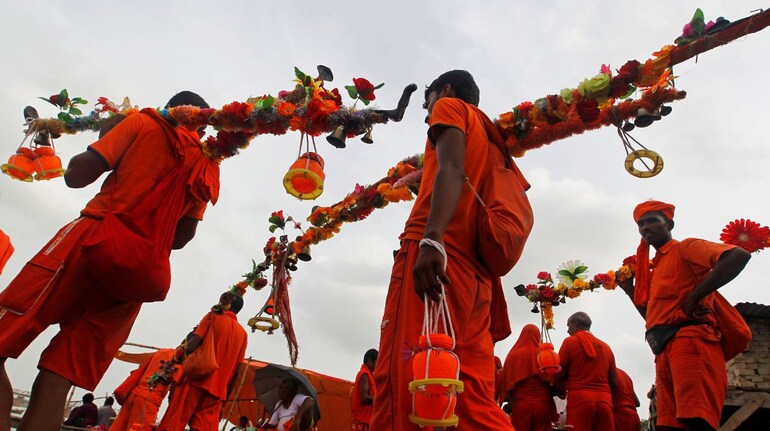
Kanwar Yatra (Pilgrimage for Lord Shiva)
The Kanwar Yatra is an annual pilgrimage undertaken by devotees of Lord Shiva (Kanwariyas). They carry holy Ganga water from sacred rivers, walking barefoot for miles to offer it at Shiva temples, especially during the month of Shravan (July-August). The journey is a testament to devotion, endurance, and spiritual cleansing.
How is it done?
- Collecting Holy Water – Devotees fill Kanwars (decorated pots) with water from the Ganges.
- Walking to Shiva Temples – Pilgrims, often barefoot, cover long distances while chanting “Bol Bam”.
- Offering Water to Shiva Lingam – The sacred water is poured on the Shiva Lingam as an offering.
- Community Feasts & Prayers – The journey concludes with bhajans, temple prayers, and prasad distribution.

Tree Planting Drives & Clean-Up Campaigns
Many religious and social groups in Uttar Pradesh conduct tree plantation and cleanliness campaigns as part of spiritual and environmental responsibility. These efforts align with the belief that nature is divine, and protecting it is a sacred duty.
How is it done?
- Sacred Tree Plantation – Devotees plant trees like Peepal, Banyan, and Tulsi, considered holy in Hinduism.
- River & Temple Clean-Up Drives – Volunteers gather at ghats, temples, and pilgrimage sites to clean surroundings.
- Vedic Rituals for Nature – Special prayers and yagnas are performed to bless the environment.
- Community Awareness Programs – Religious leaders and activists promote eco-friendly practices, urging people to reduce plastic use and protect water bodies.
